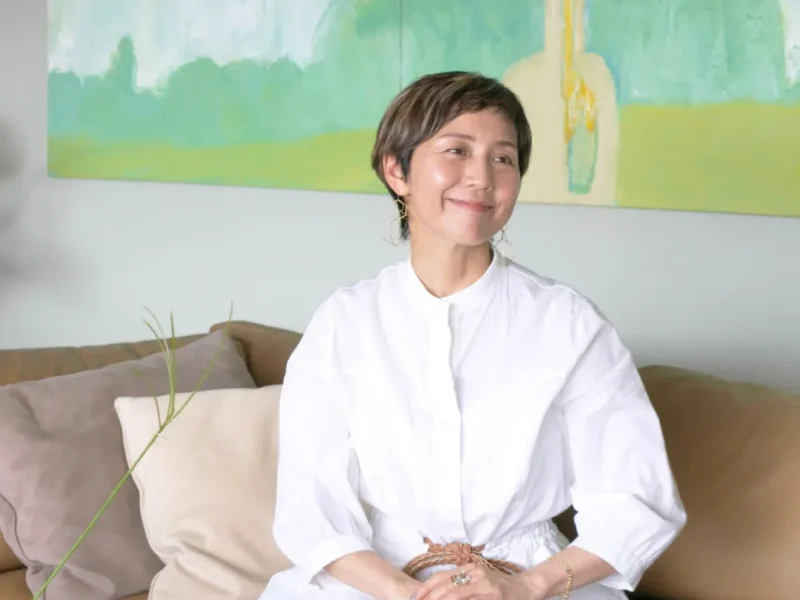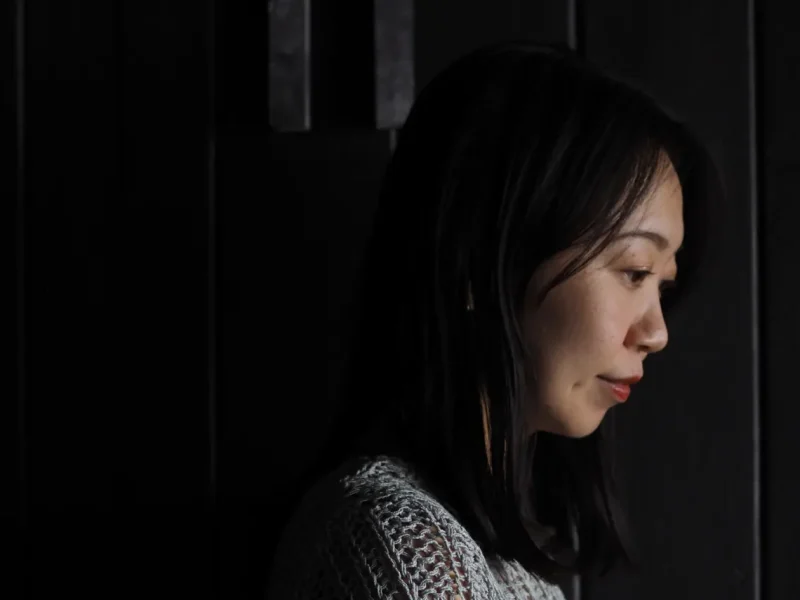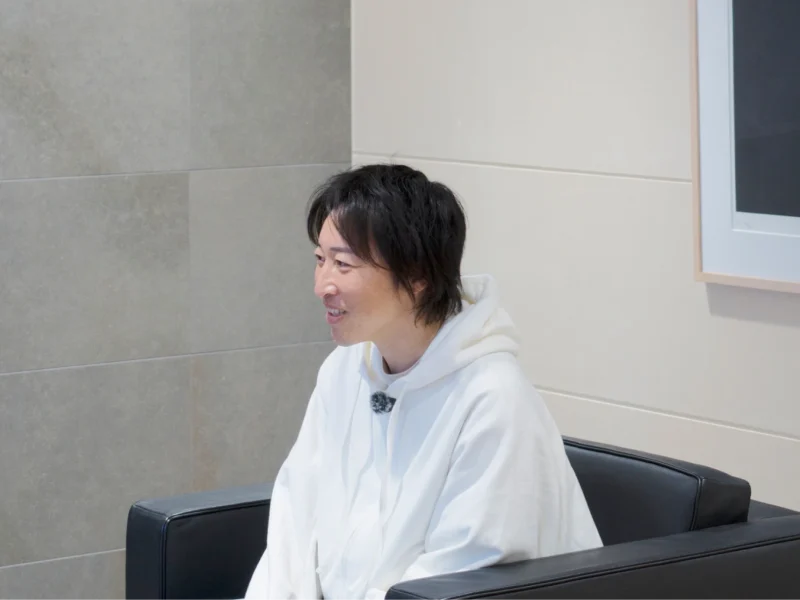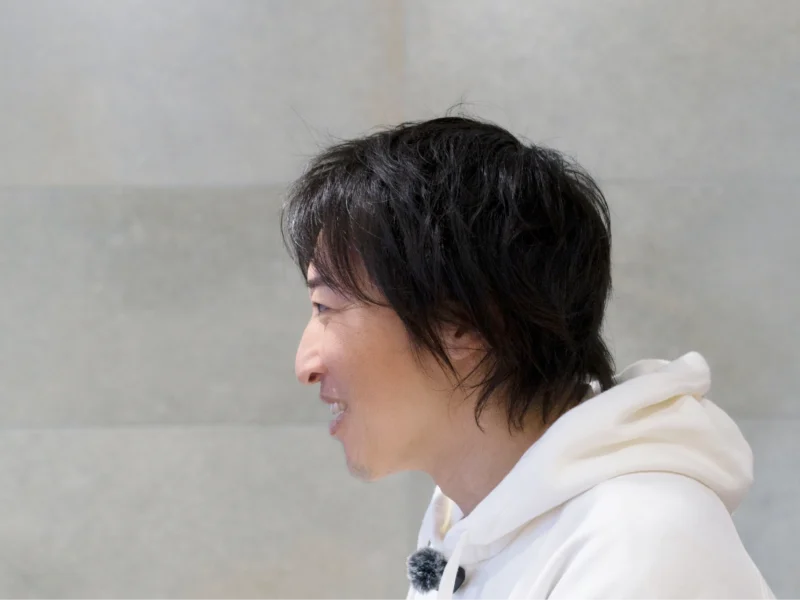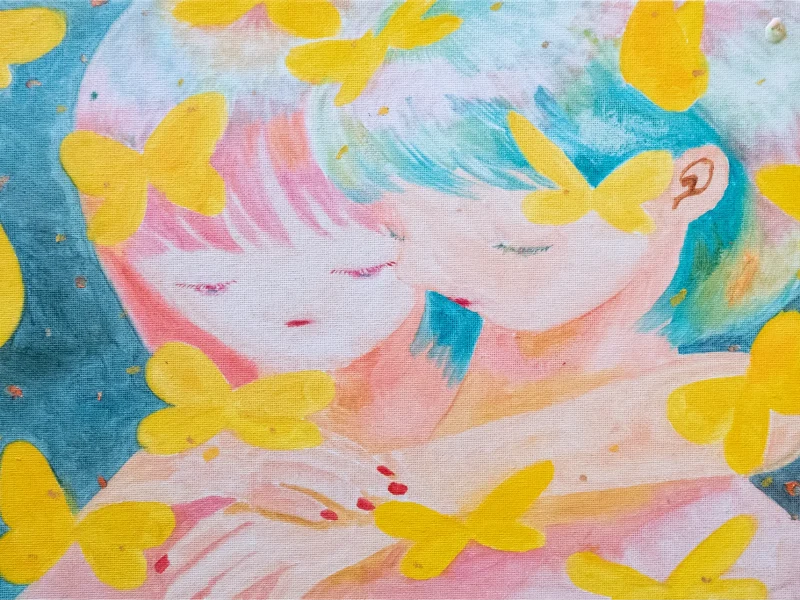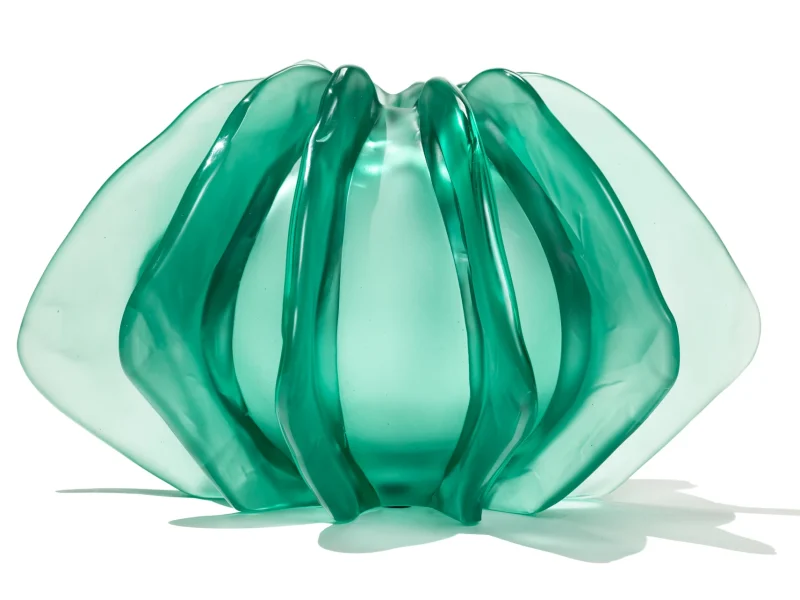Wakako Hoshina, founder of W Style, organises charity initiatives through events while consistently expressing her refined aesthetic sensibilities in everyday life. Alongside her husband, the president of the interior lifestyle company Arflex Japan, she thoughtfully weaves art, interior design, and tableware into their daily surroundings. We visited their home in Tokyo to hear her thoughts on how art can enrich and resonate within the rhythm of everyday living.
Art enriches the space when displayed in harmony with the atmosphere of the surroundings.
Ms. Hoshina, we’ve heard that you value time shared with your family and friends. What are some of the things you keep in mind when choosing and displaying art in your home?
I believe a home should be a place where one’s family can be at complete ease.
That’s why I choose artworks that bring a sense of calm and comfort; something that makes you relaxed or inspired. Over time, these kinds of works have naturally found their way into our homes.
The time I spend deciding where to place each piece is a quiet pleasure of its own. I try different spots, adjusting little by little—until there’s a moment when the artwork seems to come alive, glowing as if it’s found its rightful place.
Your husband’s profession is furnishing and lifestyle. Do you ever coordinate art with the said profession?
Yes, since my husband works in furniture, we often make small changes in line with the seasons or when introducing new series. For example, I decorate the glass table in the entrance hall with a branch arrangement or flowers.
Lately, in line with the Easter season, I’ve displayed a piece featuring daffodils, which symbolise the holiday. (Editor’s note: at the time of the interview, a daffodil artwork was placed on the glass table). Choosing art like choosing seasonal flowers, feels to me like a subtle form of hospitality for our guests.
Of course, when something feels exactly right, I tend to leave it just as it is. At the same time, there are always small changes depending on the current mood or the guest. Those little adjustments add fresh colours to everyday life.
Can you tell us more about the moment when a piece feels “just right”?
It’s that feeling when I bring home a piece I was drawn to, display it in my space, and think, “I’m so glad I bought this.” It’s at that moment you feel glad you followed your instincts—choosing a piece that spoke to you, now glowing in your space.
I usually have a specific spot in mind beforehand, but sometimes it doesn’t feel quite right in reality. The light might not suit it, or the scale may feel off. In those cases, I’ll adjust the height or location, or—if it’s part of a pair—I’ll play with the spacing between the two.
Aligning the artwork with the nearby shevling or cabinets can make a big difference in how the room comes together. When it ends up in a spot that feels as though the space was made for the art—where the piece truly shines and enhances the space—it brings me a sense of significant joy.
As we look around your home, it feels as though art is more than just decoration—it also seems to play a role in how you welcome others. Have there been moments when a piece of art sparked a deeper connection with someone?
When we welcome guests into our home, I try to create an environment where we can share a comfortable, meaningful time. That includes the space itself, the food, the tableware—and of course, the art. Sometimes I’ll display a piece by an artist we once visited together, or a photograph from a country we travelled to. Art like that often becomes a natural conversation starter.
A guest might say, “Oh, this is from that trip!” and suddenly we’re reminiscing—“That was such a fun time, wasn’t it?” These shared memories bring warmth and depth to the moment.
Choosing art with that kind of intention, to spark connection and conversation is something I find truly enjoyable.
When welcoming guests, I try to create a harmonious atmosphere where we can share a comfortable and enjoyable time—through the space, the food, the tableware, and the art.
You occasionally update your art in both of your houses in Tokyo and Lake Kawaguchi. How do you decide when to work on them?
We have another base and workspace in Yamanashi, near Lake Kawaguchi and for the past few years, we’ve been living between there and Tokyo. In both homes, I often find that when I feel the urge to change the furniture or rearrange the layout, it naturally becomes an opportunity to reassess the placement of the art.
Even small updates—like changing the sofa covers, switching out a rug, or reconfiguring the seating from a face-to-face arrangement to an L-shape—can shift the feel of the space and call for adjustments in where and how the art is displayed.
Sometimes when I visit an art fair, I’ll come across a piece that feels so perfectly aligned with a change at home where I feel a special connection. I also enjoy going to art fairs while imagining a specific place in my mind, thinking about the scale and mood of what would fit there. That process—searching for a piece that resonates both emotionally and spatially—is part of the joy for me.
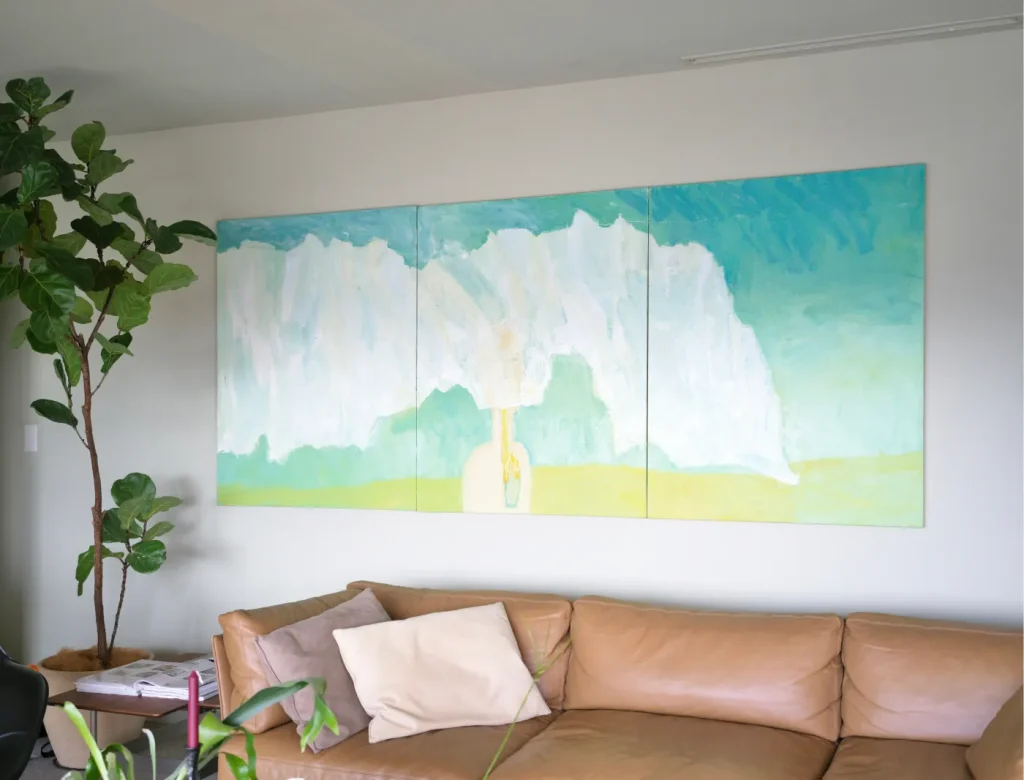
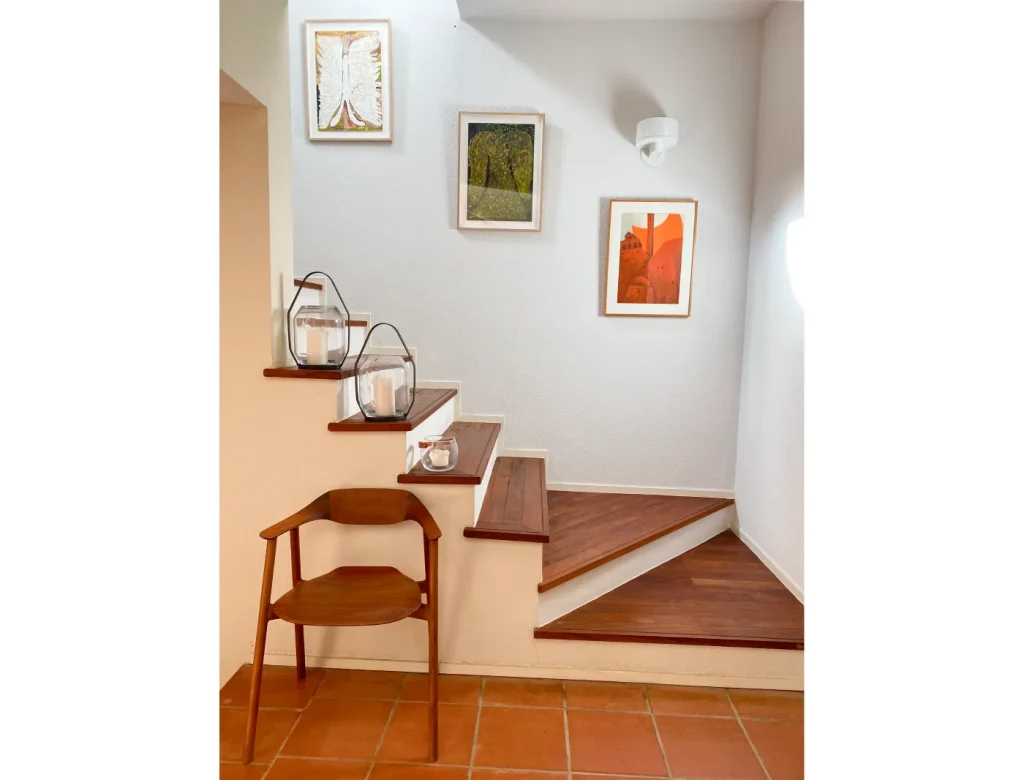
We’ve heard that you’ve also commissioned artworks directly from artists. Could you tell us how those came about?
Our home near Lake Kawaguchi is a European-style apartment building that my father-in-law built nearly 40 years ago. I was thinking about decorating the library room there when, by chance, I came across an exhibition featuring a fascinating artist named Iku Harada. I first purchased a small piece from her, and as I grew more and more fond of her work, I asked if she might be open to creating a larger piece tailored to that same space. She graciously agreed.
I sent her photos of the building and the forest visible from the library windows, and she came back with a wonderful idea—to incorporate the small piece we had already purchased into the new, larger work. Around that time, a particular sofa from my husband’s company marked its 50th anniversary, so I asked, “Could you include the sofa in the painting too?” She did so with a lovely sense of playfulness. It became a very special, memorable piece for us.
In our Tokyo home, we have a work by Berlin-based artist Ryu Itadani. He created a triptych titled Tokyo 2020, inspired by the view from our dining and kitchen windows.
The paintings show the trees in the park and the distant skyline; you’ll also find the building that houses the Arflex showroom, which technically isn’t visible from that angle. I love that hidden touch of humour that is only noticeable when mentioned.
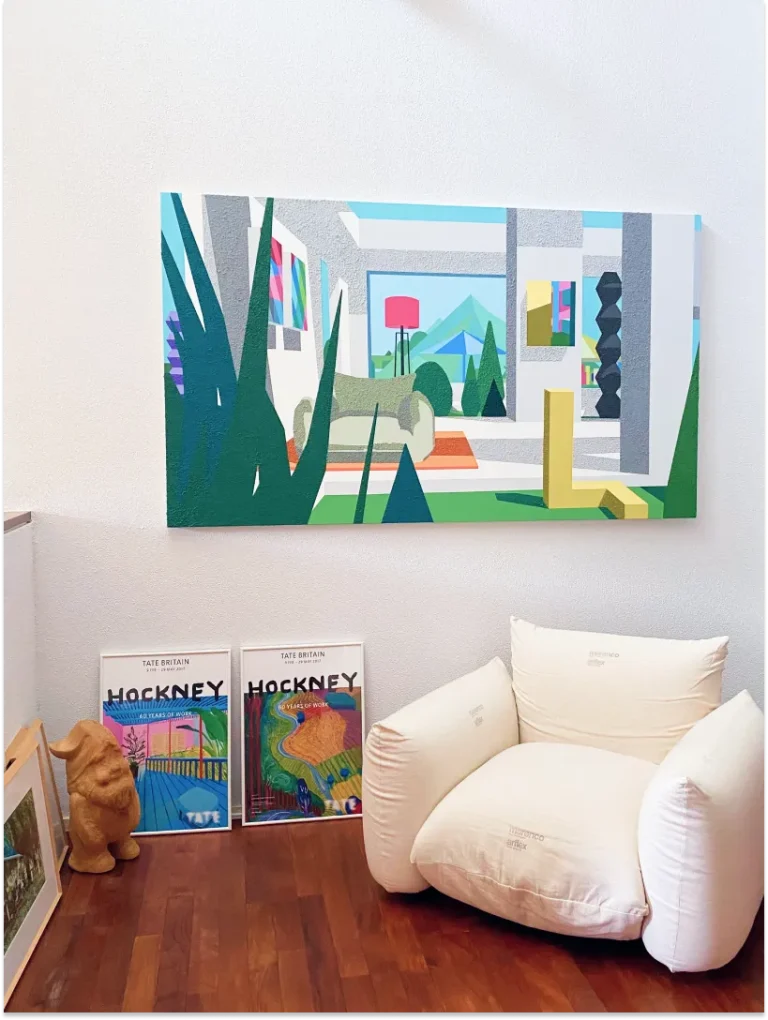
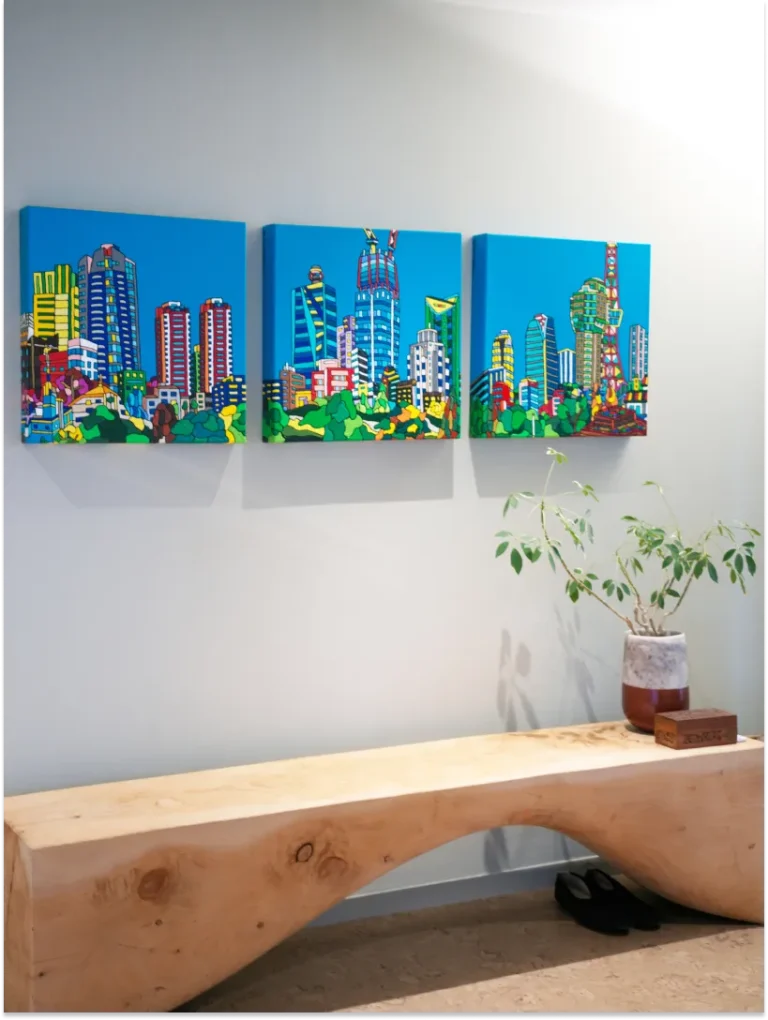
When purchasing or placing art in your home, do you consult with your family?
I’m fortunate that my husband and I share a similar sense of lifestyle and aesthetics, so we usually make those decisions together through conversation. Of course, we occasionally have different opinions, but most of the time we’re able to talk things through and reach a mutual understanding.
Come to think of it, the only piece I may have chosen entirely on my own was the very first art I ever bought: a silkscreen piece, by the way.
I also ask for my sons’ opinions from time to time. I want our home to be a place where everyone feels happy, so I often involve the whole family. And more than anything, I find it truly enjoyable to have conversations about art with them.
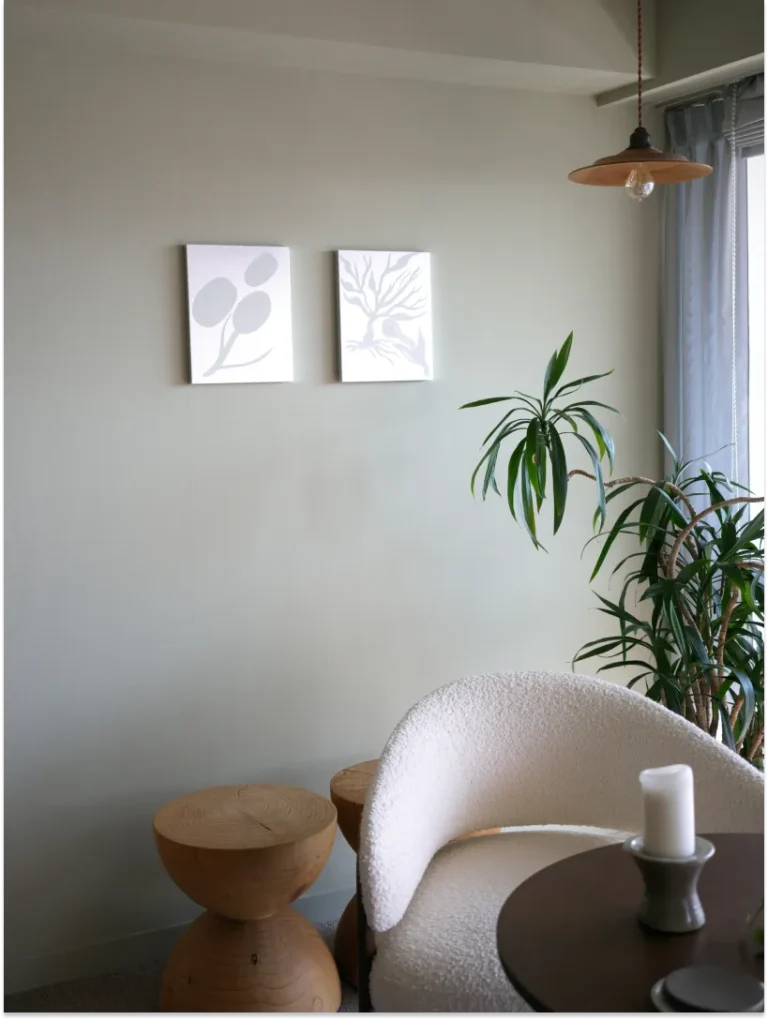
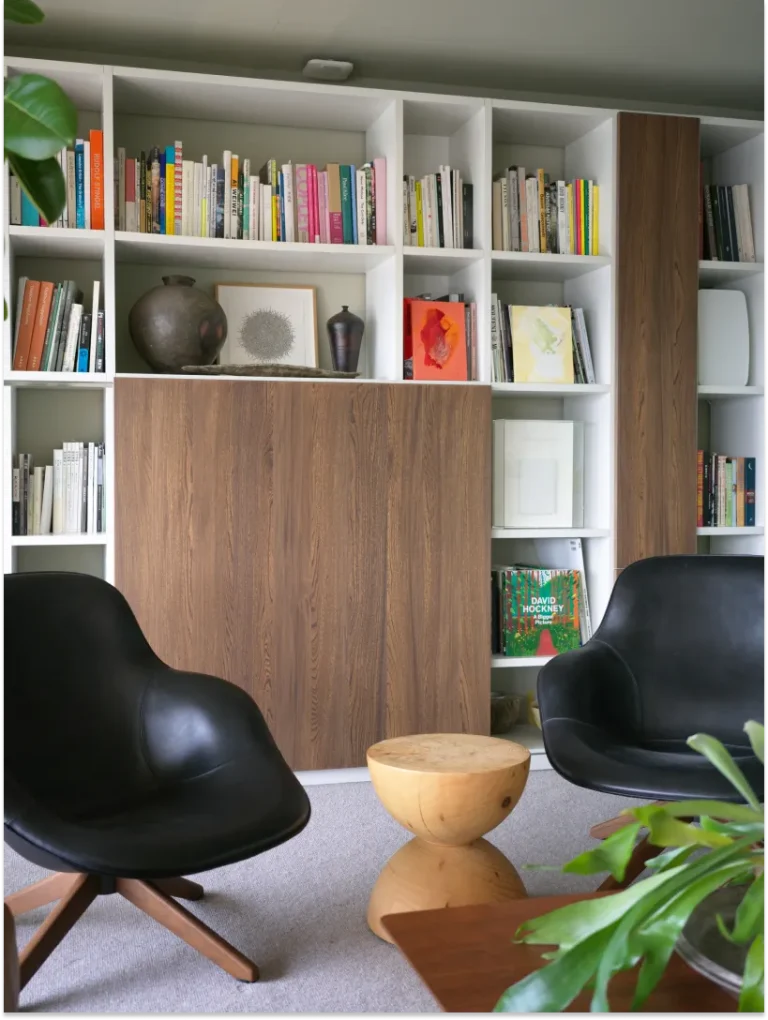
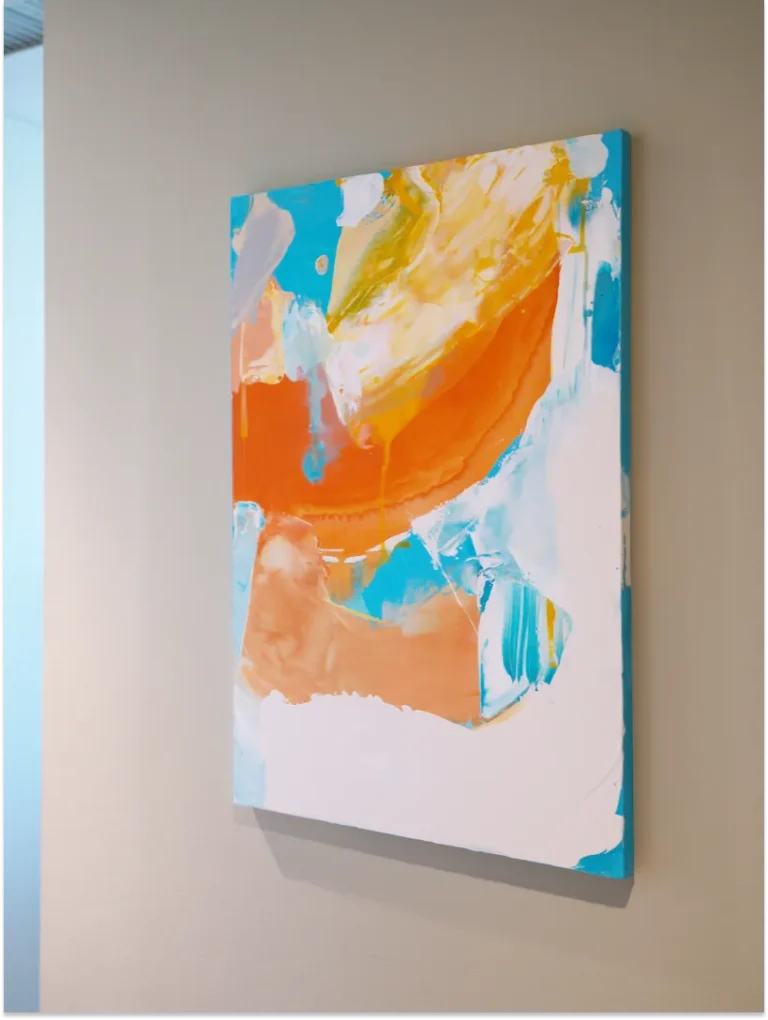
Since they were young, my sons showed an interest in art. We often had conversations like, “What do you think this looks like?” or “Which colour do you like better?” At one point, we even talked about visiting Ryu Itadani’s studio in Berlin together, with my son who lives in the UK.
Those everyday experiences, I believe, helped me develop a natural respect for artists and an appreciation for the act of creating life.
Stay tuned for the second half of this interview, where Wakako speaks about the first artwork she ever purchased, memorable encounters with gallerists, and the stories behind more pieces in her home.
Photos by Yasutaka Ochi
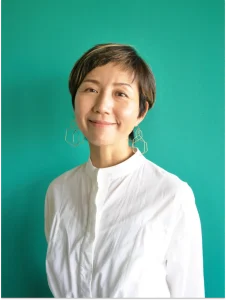
Wakako Hoshina
Founder of W Style, a charitable initiative supporting children through event-based activities. Together with her husband, the president of Arflex Japan, she promotes a rich and fulfilling lifestyle centred around furniture and art. Influenced by her parents, who worked in the tableware industry, she has a deep appreciation for ceramics, flower vessels, and pottery, and often visits solo exhibitions and kilns across Japan. She also actively supports emerging artists, keeping a keen eye on young talent.



